Bangkok is a city defined by its contrasts – where glass-and-steel skyscrapers loom above century-old temples which in turn sit shoulder to shoulder with aromatic street food stalls. Its skyline is a patchwork like no other- from the soaring Baiyoke Tower (Thailand’s tallest building) to the Phra Sukhothai Traimi (impressive Golden Buddha), the city oozes culture, but beyond the glitter and gridlock lies a city rich in unexpected calm.
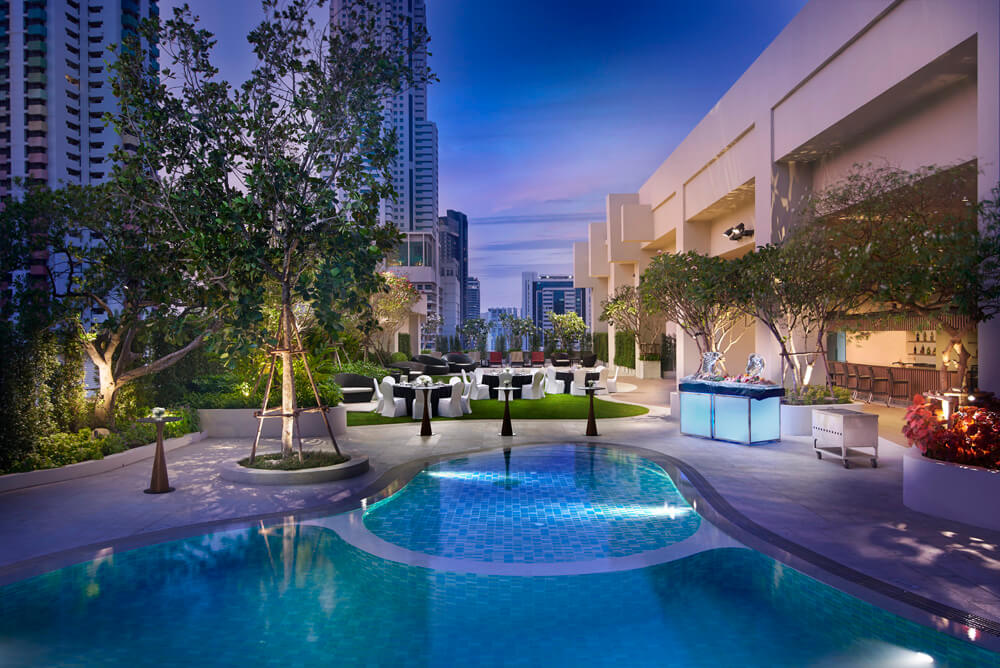
My home for the trip was perfectly positioned in the heart of the Ratchaprasong district which was a peaceful oasis, just moments away from relentless motorbikes jostling for their spot at traffic lights and the kaleidoscopic and colourful tuk-tuks. The traffic din slipped instantly away the moment my air-conditioned transfer pulled into the sweeping driveway of the Amari Bangkok. A cool hush settled over everything, the noise of the city fading like a distant echo, as a uniformed doorman ushered me into the tranquil sanctuary.
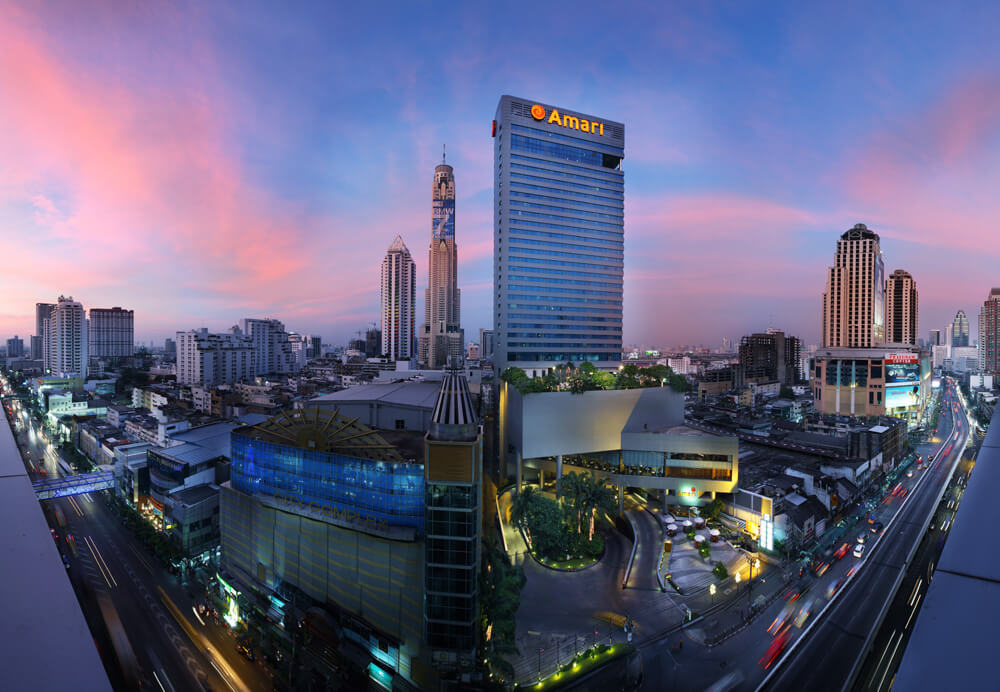
Inside, the sleek open-plan lobby opened out beneath a dazzling Murano glass chandelier and I was able to adjust to the new Thai time with a refreshing cold towel and an ice-cold drink. From the outset, the Amari delivered a seamless blend of serenity and sophistication—an ideal cocoon from the whirlwind of Bangkok outside.
The huge bed ensured I enjoyed a good night’s sleep and I was fully refreshed after my direct flight with Thai Airways – ready to sample the breakfast spread which was an Executive Lounge perk (included in my room category rate). Once fuelled from the a la carte menu and buffet options, I headed out to explore. The hotel can arrange an electric tuk-tuk – or download the Grab App (similar to Uber). There is also a handy MRT train or the BTS Skytrain which are efficient and simple to navigate (you can buy tickets at the station or put money on a prepaid card) or pick up a commuter boat to get across the Chao Phraya.
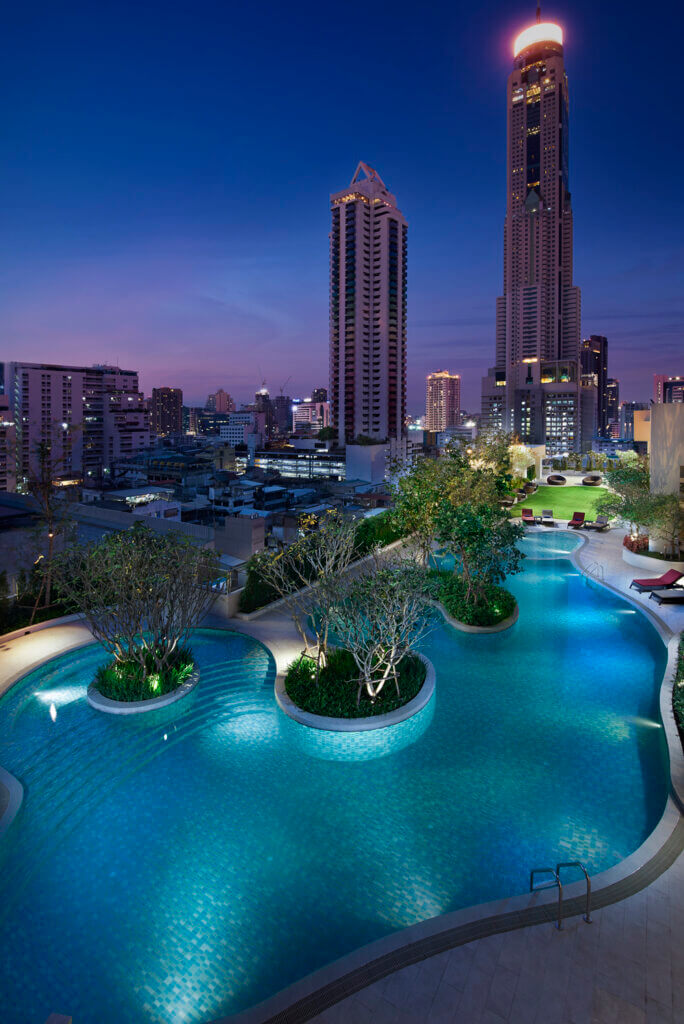
Known for its chaotic charm, Bangkok can overwhelm the uninitiated with its relentless energy, so I started my adventure with a trip to the Jim Thompson House. Tucked away on a leafy lane, it feels suspended in time. More than a museum, the story behind the House is shaped by East-meets-West intrigue. Thompson, an American architect and former intelligence officer, almost single-handedly revived the country’s silk industry in the post-war years. His home – painstakingly assembled from six antique teak houses is a masterclass in traditional Thai design, elevated on stilts and draped in orchids. Inside, his eclectic collection of Southeast Asian art and antiques provides rich insight into a bygone era, while the layout of the home itself reflects the rhythms of 19th-century domestic life. Both elegant and enigmatic, it’s one of Bangkok’s most quietly compelling attractions and even more mysterious as he vanished while on holiday in the Malaysian highlands and his disappearance remains unsolved to this day.
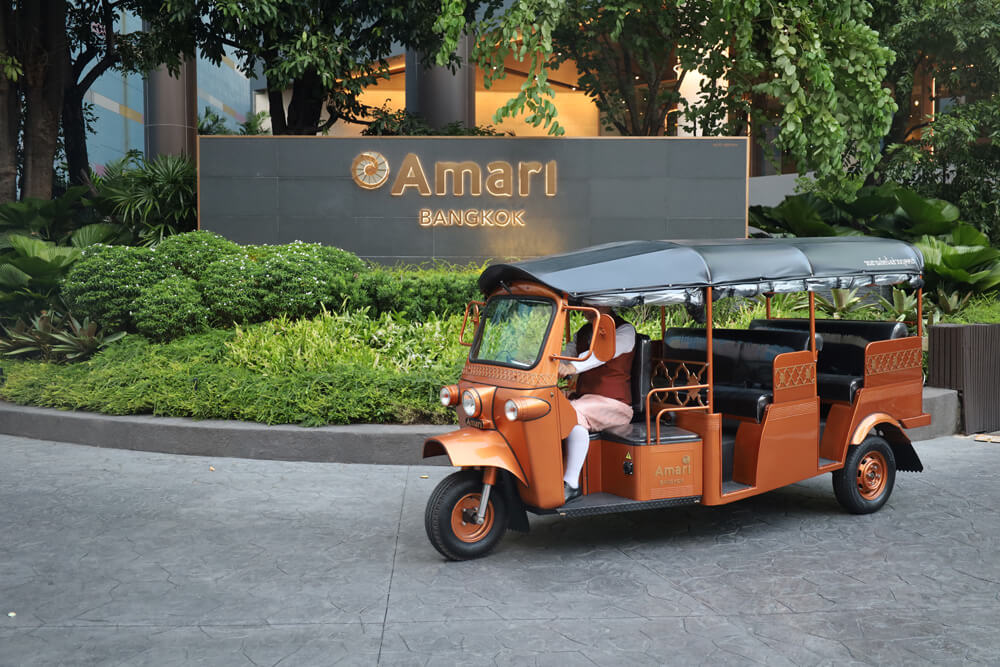
From here, cross the Chao Phraya River to Baan Silapin (The Artist’s House), nestled along a quiet canal in Thonburi. This restored wooden home doubles as an art gallery and theatre, where visitors are treated to traditional Thai puppet performances set against a village-like backdrop. It’s Bangkok at its most authentic – where boats float by offering noodles, and locals feed fish in the afternoon sun.
While landmarks like the Grand Palace and Wat Arun are deservedly popular, the city’s hidden gems are where Bangkok’s soul reveals itself. In Chinatown, Wat Traimit houses the resplendent Golden Buddha, a 5.5-ton masterpiece of solid gold and spiritual significance and if time permits, a guided boat trip is a great way to see the city from a different vantage.
From Bangkok to Bliss: Welcome to Khao Lak
When the energy of Bangkok begins to wear thin, a 90-minute flight south transports you to Phuket, and a meandering drive north reveals limestone peaks rising from jungle-clad hills, roadside stalls sell pomelo and jackfruit, and the scent of lemongrass hanging in the air. After just 55 minutes, I arrived at my final destination,The Sarojin. An elegant retreat nestled on White Sand Beach just north of Phang Nga Bay, it is set amid immaculate tropical gardens, boasts private balcony hot tubs and has direct access to a stretch of impossibly soft sand; it even has its own yacht, The Lady Sarojin, which is available for a day of island-hopping between the nearby Similan and Surin Islands.
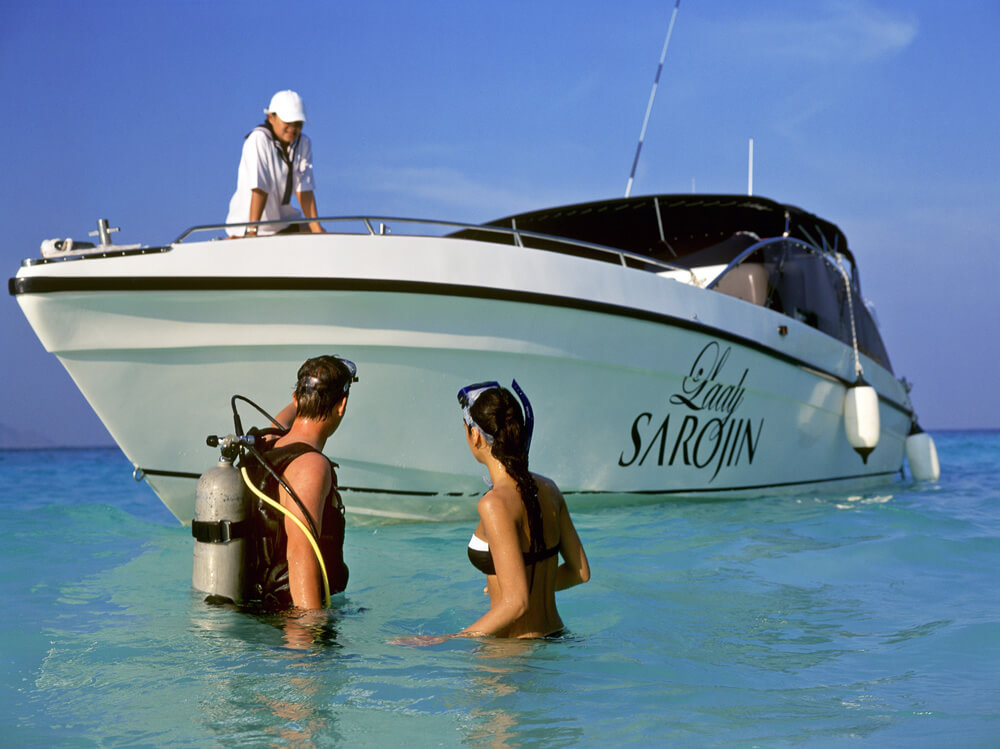
Unlike its brasher southern neighbours, this part of Thailand still ticks along at a slow pace, and The Sarojin with its lily ponds and manicured gardens is refined but relaxed; with just 56 suites set among 10 acres of tropical greenery, it is the epitome of barefoot luxury, and all you can hear is the sound of birdsong and gentle lapping of the Andaman Sea.
From the moment I arrived, it was clear this was not going to be a typical fly-and-flop escape. My first morning began with a spade. I joined the resort’s “One Booking One Tree” initiative and planted a mangrove sapling on Pakarang Cape—a modest but meaningful act of regeneration, helping restore a coastline ravaged by the 2004 tsunami. It’s one of many ways guests are invited to engage with the land and community, rather than simply observe it. That ethos is echoed at Avautis, a nearby social enterprise supported by the hotel, where autistic adults and children are employed to craft natural skincare products and farm organic eggs – which are collected daily and used in the hotel’s kitchen.
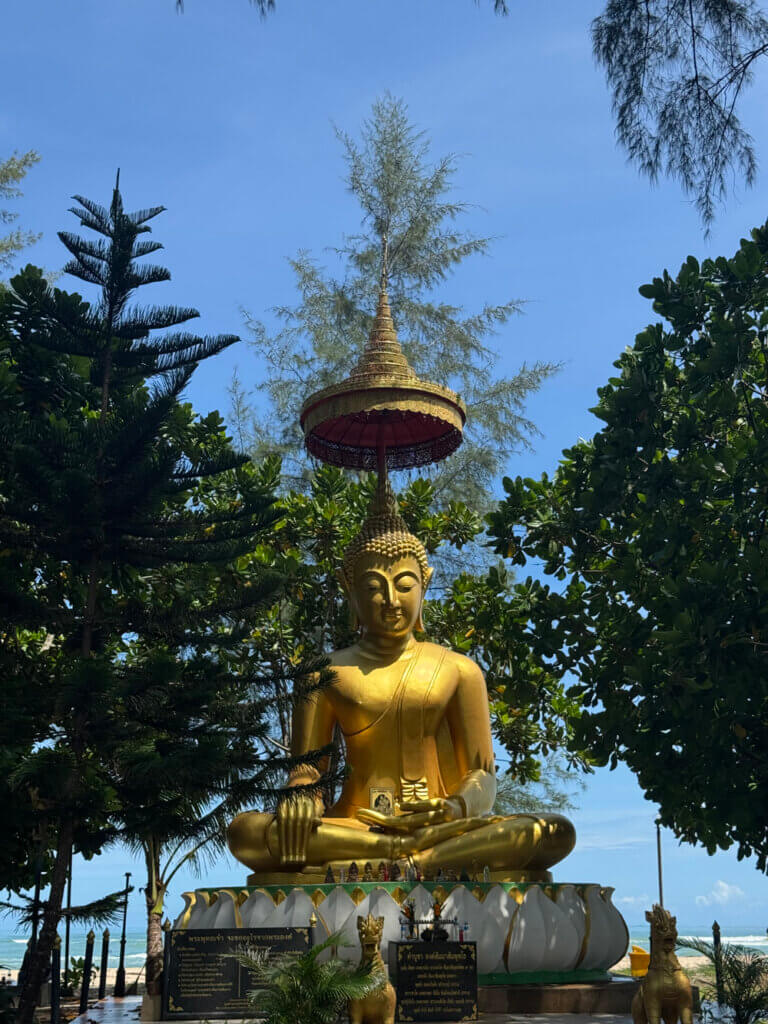
The resort sprawls gracefully across 11km of tranquil beachfront and manicured gardens and can best be described as low key, barefoot luxury. Morning yoga at the Wellness Pavilion gave way to leisurely breakfasts beneath banyan trees, followed by hours of languid swimming, reading and lounging, and of course, the ubiquitous afternoon tea!
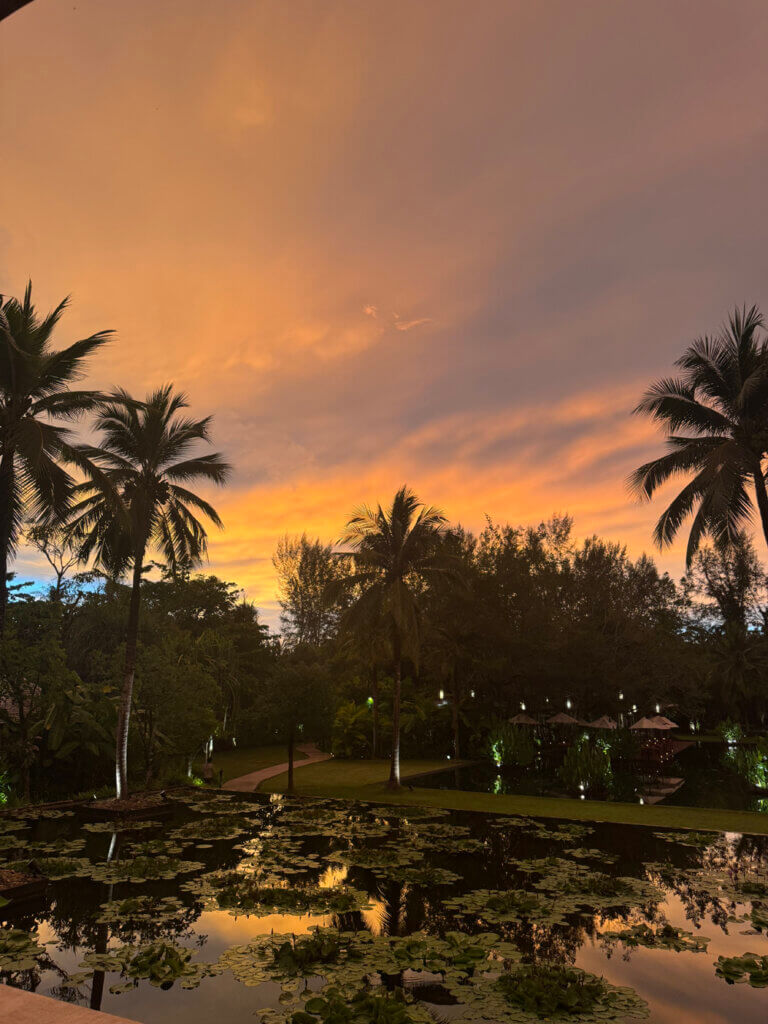
One evening, I was led through the jungle to a private dinner set beneath a waterfall, the rocks glowing with the light of hundreds of candles. Whilst dining on the premises is equally elevated. Boasting two Michelin Keys. Fiscus, the resort’s fine-dining restaurant set beneath ancient ficus trees, offers a delicate fusion of Thai and Mediterranean cuisine. A standout was the spicy pomelo salad—fragrant with chilli, lime, and slow-roasted coconut, but nothing failed to please!
If you can bear to leave the resort, Khao Lak offers an abundance of immersive day trips. A short drive inland leads to the Jurassic terrain of Khao Sok National Park, where jungle trails weave past limestone cliffs, hidden waterfalls like Sai Rung and Chong Fah with their freshwater pools; In Lamru National Park, monkeys swing from vines and coastal trails open onto secret beaches and cliff top views; or you could just spend a lazy morning being rowed down the river on a bamboo raft.
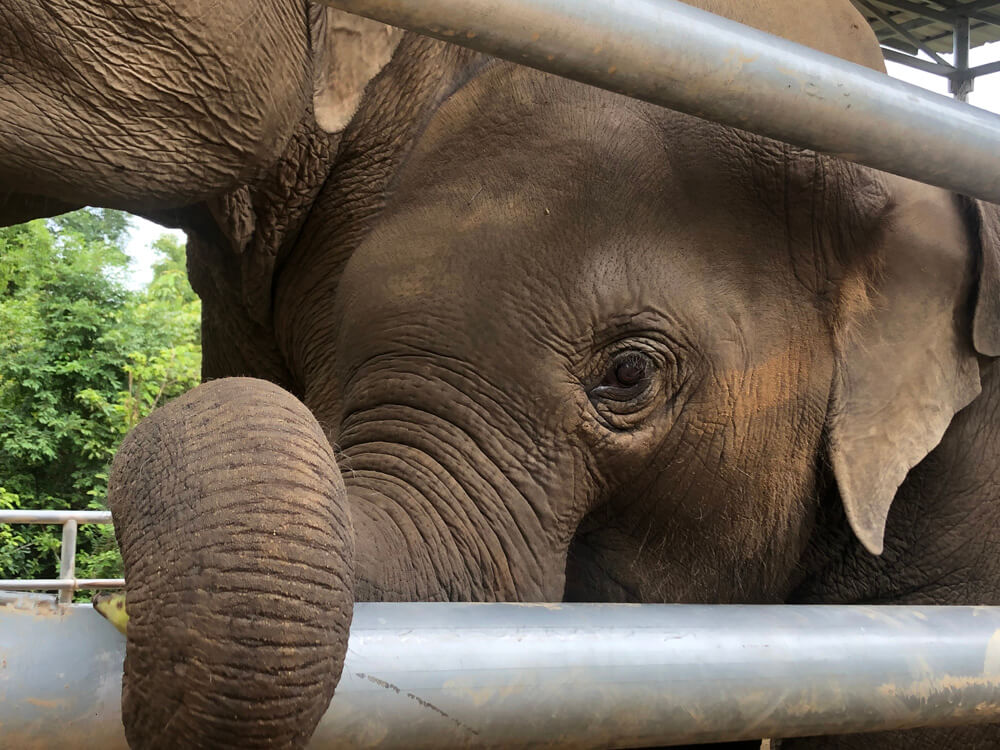
There’s history here, too. Takua Pa Old Town, once a tin-mining hub, is a peaceful grid of Sino-Portuguese shophouses and shaded lanes. On Sundays, the market brims with sweet pandan pancakes, street food sizzling in woks, and stalls filled with local crafts – a living portrait of a slower, more soulful Thailand.
Despite Khao Lak’s growth over the years, the region still holds its authenticity – and The Sarojin channels that beauty. The result is quieter and more meaningful and this boutique hideaway offers not just rest and relaxation, but a deeper connection to Thailand’s wilder, more reflective side and is the perfect contrast to Bangkok.



